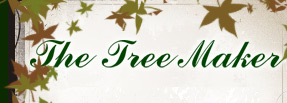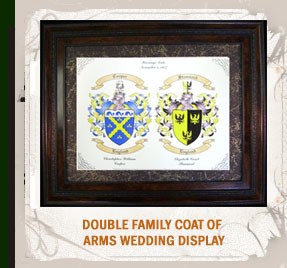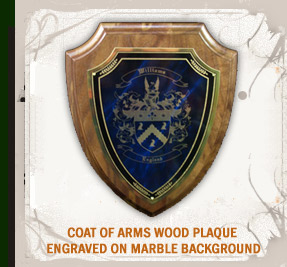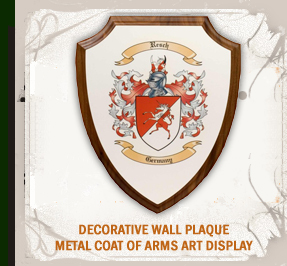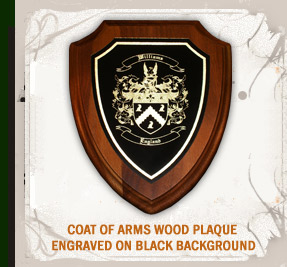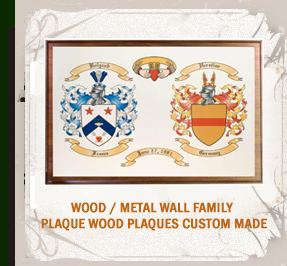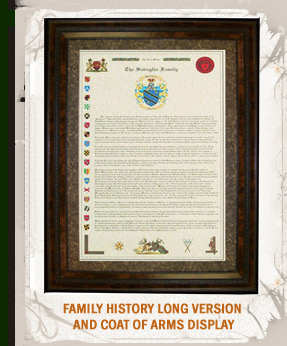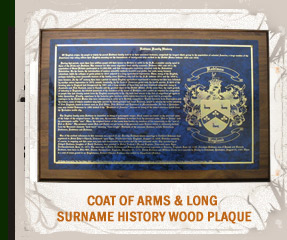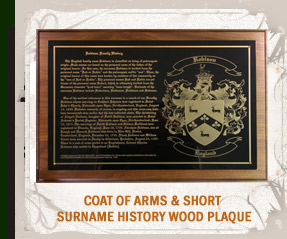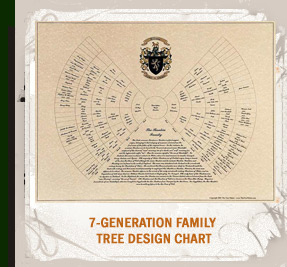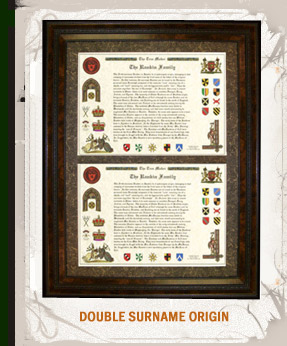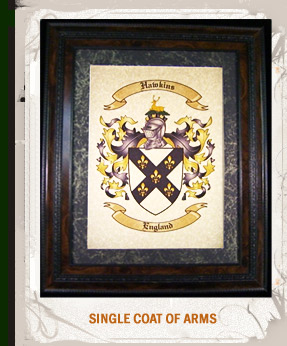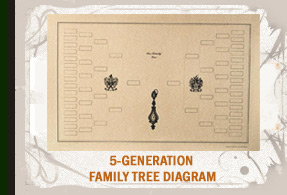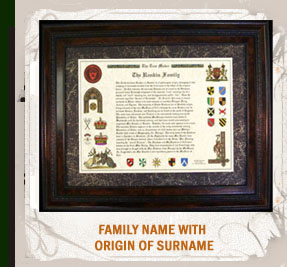Display Your Family History and Coat of Arms
The
History of the Crusades: The Crusades of the
Middle
Ages were an almost continuous series of military-religious
expeditions made by European Christians in the hope of wresting
the Holy Land from the infidel Turks. From 1096 until nearly 1300,
Crusaders, traveling in great armies, small bands, or alone, journeyed
into the Orient to wage war against the Moslems, who had become
a serious threat to Christianity. Although many went for worldly
gain, it was religious faith that inspired thousands upon thousands
of these "soldiers of the Cross." When the Crusades
began, Europeans were still living in the so-called Dark Ages; before
they were ended, the West stood upon the threshold of the modern
era. The Crusades were not wholly responsible for his progress,
but none will deny that they hastened the development of our modern
world.
How the Crusades Began: The Christians of Europe
believed that pilgrimages to the Holy Land would guarantee the forgiveness
of their sins and the healing of their sick bodies and souls. From
the early 600's Jerusalem was held by the non-Christian Arabs,
but for many years their possession of the city had disturbed the
Christians little or none. Although Jerusalem was a hallowed shrine
from them and for all other Moslems, as well as for Christians and
Jews, the Arabs had not only let the pilgrims come and go at will
but had also permitted Christians to settle and live peacefully
in the Holy Land.
By 1071, when
the Seljuks, a less civilized and less tolerant tribe of Turks,
captured the Holy City, the situation had changed. Soon the Sacred
Places were being desecrated and destroyed; Christian settlers ere
mistreated; and pilgrims were persecuted. In the same period the
Turks threatened to overwhelm the entire Byzantine Empire and then
drive all Christians out of the East. Alexius the Byzantine Emperor,
appealed to the Pope at Rome for aid. At a church council held at
Clermont in southeastern France in November, 1095, Pope Urban II
called upon the faithful to "take up the cross" in Christ's
behalf, rescue Christ's Sepulcher from the infidels, and save
the Christian Byzantine Empire.
Urban's
historic speech set in motion the whole crusading movement. Fired
with religious fervor, people of all ranks clamored to join in the
righteous cause that God had willed. A cross of red cloth worn upon
the breast became the symbol of the departing Crusader {a word derived
from the Latin crux, meaning cross}.
The First Crusade {1096 - 1099}
The
People's, or Peasants', Crusade: By the spring
of 1096, before the First Crusade was officially launched, Peter
the Hermit and other wandering preachers had collected a number
of motley armies, composed of peasants, vagrants, beggars, women,
and children. Driven by fanatical zeal, these ignorant, disorderly,
penniless crews set out from France and the Rhineland for the Holy
Land - more then two thousand miles away. Three of the mobs
were destroyed or scattered in Hungary, in payment for their lootings,
murders, and other outrages; but in July a group led by Walter the
Penniless, a poor knight, and another led by peter the Hermit finally
joined forces in Constantinople forming the first Crusade.
After causing
grave disturbances in the Byzantine capital, the peasants who had
survived the terrible march across Europe pushed on into Asia Minor,
where the Turks massacred them. Peter the Hermit, who remained in
Constantinople at this time, was one of the few members of the People's
Crusade who lived to reach the heart of the Holy Land.
The Princes' Crusade: Meantime, European
princes, barons, and knights had been assembling and setting forth.
From the spring of 1096 through the spring of 1097 they traveled
by land and by sea toward their goal. Major groups included the
French and German volunteers under Godfrey of Bouillon, Duke of
Lorraine, and his brother Baldwin; Frenchmen under Raymond, Count
of Toulouse, and Bishop Adhemar, the Pope's legate; and Frenchmen
and Normans under Bohemund and Tancred. These and other armies make
up of wealthy nobles, humble monks, professional warriors, merchants,
farm hands, vagabonds, and criminals, followed various routes to
reach the common destination. And their purposes also varied. Most
were inspired by religious faith, but many sought adventure, opportunity,
power, or wealth.
The Crusaders
began crossing over into Asia Minor in May 1097, and after a long
and harrowing March, spent the winter outside mighty Antioch. In
June 1098, they captured the city, only to be besieged in their
turn by a powerful Turkish army. Death and desertions sapped the
strength of the Crusaders, and their morale collapsed; but the discovery
of a spear, which they believed to be the one used to wound the
crucified Christ, inspired them to rise up and overthrow the Turks.
On July 15, 1099 after six weeks of siege, the weak remnants of
the Christian armies captured the Holy City of Jerusalem. Covered
with the blood of massacred Turks, the victors knelt at the Holy
Sepulcher, thus bringing to successful conclusion the only crusade
to be motivated principally by religious zeal.
After the death
of Godfrey of Bouillon, who was made ruler of Jerusalem and named
"Advocate of the Church of the Holy Sepulcher", the
Kingdom of Jerusalem was established with Baldwin as its monarch
in 1100. To the north other European princes set up the Christian
states of Edessa, Tripoli, and Antioch. Many Europeans were attracted
to the East, and three religious-military orders - the Knights
of St. John {Hospitalers}, the Knights Templar, and the Teutonic
Knights - were formed to defend and care for the pilgrims
who streamed into the Holy Land.
The Second Crusade and Third Crusade
The
Second Crusade {1147 - 1149}: Stirred by the new
that the Christian County of Edessa had fallen to the Moslems, the
French monk St. Bernard of Chairvaux called for another great expedition
to the East. Louis VII, King of France,
and Conrad III, the German Emperor, led this crusade, which was
to poorly manage that nothing was accomplished. Nevertheless, thousands
of Crusaders, traveling singly or in small bands, continued moving
into Asia Minor.
The Third Crusade {1189 - 1191}: In 1187 the great
Moslem leader Saladin captured the Holy City with a huge Turkish
army. When this news reached Europe, the Third Crusade got under
way. Its leaders were the most powerful rulers of the West: the
German Emperor Frederick I, called "Barbarossa" {Red
Beard}; Philip Augustus, King of France; and King Richard the Lion-Hearted
of England. Although it was
the most famous and colorful of all the military expeditions into
the East, this Crusade, too, ended in failure.
While the German
army was crossing a river in Asia Minor, after the long overland
march from the west, the aged Frederick was drowned. Leopold of
Austria took his place. The English and French Crusaders reached
the Holy Land by ship and liberated the Christian city of Acre {July
1191}, which the Turks had been besieging for almost two years.
Then Richard quarreled with his hated French rival, and Philip returned
to France. Although he was unable to recapture the Holy City, Richard,
the only one of the three kings to continue the campaign, finally
obtained a three year treaty in which Saladin agreed to permit Christians
to visit the Holy Sepulcher without being disturbed. Christian control
over the eastern shores of the Mediterranean was maintained.
Thirteenth-Century Crusades
The
Fourth Crusade {1202 - 1204}: Called the arms by
Pope Innocent III, the warriors of the Fourth Crusade determined
to attack the Moslems in the Holy Land from Egypt. To reach Egypt,
they needed the assistance of the ship-owners of Venice, and to
obtain this assistance they had to help the Venetians crush Zara,
a commercial rival of Venice on the Adriatic, and pillage Constantinople.
The protests of the Pope failed to halt their attacks on these two
Christian cities. As a result of the conquest of Constantinople
in April 1204, the Byzantine Empire fell to the "Latins",
who held it fro more than half a century. The victories of the Fourth
Crusade were purely commercial and political; the situation in the
Holy Land remained unchanged.
The
Children's Crusade {1212}: This tragic expedition
was made by bands of French and German children, who marched to
Mediterranean ports, convinced that the sea would dry up and permit
them to reach the Holy Land. No such miracle occurred, and several
shiploads of the children were carried into slavery in Turkish territories.
The remainder perished, straggled back home, or wandered aimlessly
around Europe. The pathetic story of a band of German children lost
in this terrible crusade may have inspired Robert Browning's
famous poem, "The Pied Piper of Hamelin".
Later Crusades:
Most of the crusades, which followed accomplished little. The Pope
pushed the German Emperor, Frederick II, into leading the Fifth
Crusade {1228 - 1229}. Although Jerusalem passed into Christina
hands as a result of a treaty obtained by Frederick, the Turks recaptured
it in 1244. The Sixth {1248 - 1254} and Seventh {1270} Crusades,
led by the devout Louis IX of France, failed to liberate the Holy
City, which remained in Moslem hands until World War I. The fall
of Acre in 1291 put an end to Christian rule in the Holy Land. A
few Christian traders remained, but the day of the Crusader and
the Western conqueror and settler was past.
Importance of the Crusades
As military
campaigns, the Crusades were a failure, but indirectly, and to some
extent directly, they affected much of the European history that
followed. Numerous important social, cultural, and economic changes
took place during and immediately after these famous expeditions.
While few of these developments can be flatly labeled as results
of the Crusades, almost all were stimulated by the increased interchange
between East and West that the Crusades brought about.
Trade
and Commerce: During and after the Crusades trade between
Italy and the ports at the eastern
end of the Mediterranean were tremendously increased, and wealth
was circulating as never before. By the time European nobility had
begun to look upon such imports as Oriental rugs and perfumes as
essentials, the growing middle class of merchants and craftsmen
was demanding the new foodstuffs, such as cane sugar, rice, garlic,
and lemons, and textiles, such as muslin, silk, and satin, from
the East, which naturally became less expensive as the shipments
increased in size. Natural, too was the growth of towns and cities
in this period. Goods brought into Europe had to be distributed,
and as trade increased, so did the towns and cities along the inland
trade routes. The larger galleys and sailing vessels built to carry
Crusaders were also used to bring luxuries of the Orient to the
courts of England and Scandinavia.
The Crusades
affected finance and business practice in Europe. Gold coins were
minted and letters of credit came into use for the convenience of
the Crusaders. To finance the expeditions, the wealthy were taxed,
and serfs were allowed to buy their freedom and sometimes the land
on which they worked. Thus the number of small landowners was increased,
and the feudal system was weakened. Western gold was widely distributed
through the purchase of supplies and Oriental wares.
Social Change and Intellectual Growth
Growth
from the Crusades: In weakening the feudal system, the
Crusades stimulated the development of a new class of free farmers
and townsmen. In some parts of Europe wealthy "merchant princes"
arose to take the place of the many nobles who were killed in the
Crusades or who settled permanently in the East; in France the monarchy
was greatly strengthened by the waning of the nobles' power.
Contact with
the East and new contacts among the various peoples of Europe led
to the exchange of ideas, customs, and techniques. Thus the Crusades
helped to break down the barriers of ignorance and isolation. During
this period, interest in geography and navigation was tremendously
stimulated; better maps were drawn; and more and more sea captains
adopted the Arabs' crude mariner's compass and astrolabe.
Equipped with new knowledge and urged on by their desire for the
fabled riches of the Orient, European navigators continued to seek
better routes to the Far East until finally they not only sailed
around Africa but also discovered the New World.
The Crusades
encouraged Europeans to attempt to grow the crops and manufacture
the products introduced from the East. The Eastern windmill and
irrigation ditch became common in parts of the Continent. Often
Eastern artists and craftsmen were imported to decorate the great
double-walled stone castles, based on Eastern models, which the
nobles of Europe erected. Native artisans learned from these innovations.
New military tactics and equipment, as well as chivalric traditions
involving heraldry and tournaments, were introduced from the East.
Western writers adapted many Oriental stories, and quantities of
history, fiction, and combinations of the two gave the Crusades
a permanent place in European literature. Popular ballads about
the great expeditions provided the illiterate masses of Europe with
both pleasure and information.
Good
and Evil from the Crusades: The Crusades played a prominent
part in the exciting developments, which occurred in this period,
although they were usually a cause, rather than the cause, of change.
The developments were both beneficial and harmful. The Church gained
great wealth. But wealth brought worldliness; the use of violence
for a religious end and the association of religion with political
and economic aggression troubled many thinking men; and the teachings
of Byzantine philosophers weakened the faith of many Crusaders,
some of whom became Moslems.
During the Crusades,
Europeans came into contact with a civilization, which was, in many
ways, more advanced than their own. Yet many brought back from the
East nothing more than a taste for luxury. Despite the example of
humane tolerance set by such an Eastern leader as Saladin, European
warriors frequently returned from the Crusades to lead campaigns
of violent persecution against religious minority groups. Thus the
aftereffects of the Crusades, like the Crusades themselves, were
a mixture of good and evil.
If
you wish to show the history of your family genealogy by displaying
your family tree and coat of arms, then feel free to visit our website
at The Tree Maker.
